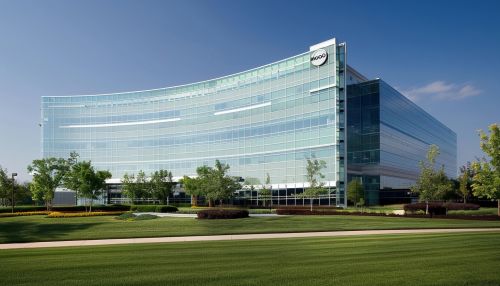Motorola
History
Motorola, Inc. was an American multinational telecommunications company founded on September 25, 1928, based in Schaumburg, Illinois. It was founded by Paul and Joseph Galvin as the Galvin Manufacturing Corporation, and its first product was a battery eliminator for radios. In 1930, the company sold its first car radio, the Motorola, from which the company name was derived.


Throughout the 1930s and 1940s, Motorola continued to produce car radios and other consumer electronics products, but also began to expand into other areas. During World War II, the company produced Handie-Talkie two-way radios for the military. After the war, Motorola began to focus on television, producing its first television in 1947.
In the 1960s, Motorola began to focus on semiconductor technology, and in 1969, a Motorola radio was used by Neil Armstrong to communicate from the moon to Earth. In the 1970s and 1980s, Motorola continued to innovate in the field of telecommunications, producing the first portable cell phone, the DynaTAC, in 1983.
In the 1990s and 2000s, Motorola continued to produce cell phones and other telecommunications products, but also began to focus on other areas, such as broadband communications and embedded systems. In 2011, Motorola split into two separate companies, Motorola Mobility and Motorola Solutions. Motorola Mobility was later acquired by Google in 2012, and then by Lenovo in 2014.
Products and Services
Motorola's products and services have evolved over the years to keep pace with the changing needs of consumers and businesses. The company's product portfolio includes mobile phones, tablets, wearables, broadband modems, home phones, and business-orientated two-way radios.
In the mobile phone market, Motorola has a history of innovation. The company's StarTAC mobile phone, released in 1996, was one of the first ever flip phones, and its Razr phone, released in 2004, was one of the best-selling mobile phones of all time. More recently, Motorola has been known for its Moto G and Moto Z series of smartphones, which offer high-quality features at affordable prices.
In the area of broadband communications, Motorola provides a range of products and services for cable operators, including cable modems, digital video recorders, and network equipment. The company's broadband products are designed to help cable operators deliver high-speed data, video, and voice services to their customers.
In the area of embedded systems, Motorola provides a range of products and services for businesses, including microcontrollers, microprocessors, and network processors. These products are used in a wide range of applications, from automotive systems to industrial automation to medical devices.
Corporate Affairs
Motorola's corporate affairs have been shaped by a number of key events and decisions over the years. The company's decision to split into two separate companies in 2011 was a significant moment in its history. The split was designed to allow each company to focus on its core business areas, with Motorola Mobility focusing on mobile devices and home products, and Motorola Solutions focusing on enterprise and government communications solutions.
Another key event in Motorola's corporate affairs was the acquisition of Motorola Mobility by Google in 2012. This acquisition was seen as a way for Google to strengthen its position in the mobile market and to gain access to Motorola's extensive patent portfolio. However, Google later sold Motorola Mobility to Lenovo in 2014, in a deal that was seen as a way for Lenovo to expand its presence in the global smartphone market.
Motorola's corporate affairs have also been shaped by its commitment to corporate responsibility. The company has a number of initiatives in place to promote ethical business practices, environmental sustainability, and community involvement. These initiatives include a code of conduct for employees, a comprehensive environmental policy, and a range of community programs and partnerships.
